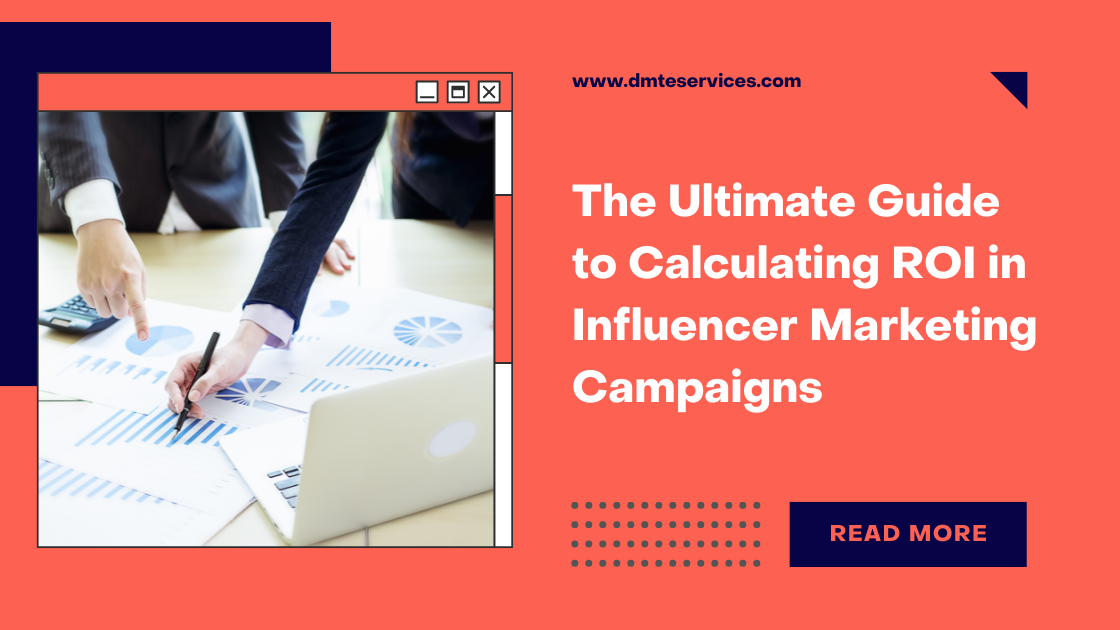The Ultimate Guide to Calculating ROI in Influencer Marketing Campaigns
Influencer marketing is a popular strategy used by businesses to promote their products through people with a large following on social media. This type of marketing is growing rapidly and is expected to reach $21.2 billion by the end of 2023. Companies of all sizes use influencer marketing to boost brand awareness, increase sales, and create stronger connections with their customers. But how do you know if your influencer marketing campaign is successful? That’s where calculating ROI, or return on investment, comes in.
In this guide, we’ll explain how to measure the success of your influencer marketing campaigns in a simple way that’s easy to understand.
Why Measure Influencer Marketing ROI?
Getting Approval from the Bosses
Influencer marketing is still a new idea for many companies. This can be both good and bad. On the one hand, there are no old expectations, so you can impress everyone with your first results. On the other hand, some people might be skeptical, especially if your main goals are brand awareness and engagement, which are harder to measure in the short term. By knowing how to measure ROI, you can show your bosses the impact of your campaigns and get their support.
Doing More of What Works
When you measure ROI, you can see what parts of your campaign are working the best. For example, if you see great results from a specific influencer or type of content, you can focus more on those strategies. This way, you can improve your campaigns and possibly get more budget to do even better in the future.
Rewarding Your Best Influencers
Measuring ROI also helps you identify which influencers are giving you the best results. You can then reward these top-performing influencers and build stronger relationships with them. This can lead to long-term partnerships that are beneficial for both parties.
How to Measure Influencer Marketing ROI for Different Goals
Immediate Sales
Every marketer wants to drive sales, and influencer marketing can help with that. To measure sales ROI, you need to track all purchases that come directly from your influencer marketing efforts. This is often done using unique links and promo codes given to each influencer. These tools help you see exactly how many sales each influencer is generating.
Sales ROI is especially important for:
- Brands with low-priced products
- E-commerce brands
- Brands with a strong social media presence
- Brands offering special discounts through influencers
To measure sales, look at:
- Unique links: Trackable links that show where visitors come from.
- Promo codes: Special discount codes personalized for each influencer.
Brand Awareness
Brand awareness is about how familiar people are with your brand. If someone asks you to name a skincare brand, you might think of Neutrogena or Olay because they have strong brand awareness. Even smaller brands can focus on awareness within a specific target audience.
To measure brand awareness, track:
- Impressions: How many times your content is shown to users.
- Reach: How many unique people see your content.
- Branded search volume: How many people are searching for your brand’s name.
- Social media mentions: How many people mention your brand on social media.
- Website traffic: How many people visit your website from an influencer’s post.
Brand Engagement
Brand engagement is about getting people to interact with your brand. The more people engage with you today, the more likely they are to buy from you tomorrow. Engagement includes likes, comments, shares, and other interactions on social media.
To measure brand engagement, look at:
- Engagement on social posts: Likes, shares, comments, etc.
- Social post saves: How many people save your posts for later.
- Cost per engagement (CPE): The cost of each interaction.
- Email subscriber count: Growth of your email list.
- Follower growth: Increase in followers on your social channels.
- Add-to-cart: How many people add a product to their cart.
Influencer-Generated Content
Influencer-generated content (IGC) refers to the photos, videos, and other materials that influencers create for your brand. This content can be used across various channels, such as emails, paid ads, and social media. Repurposing influencer content can save you money and time compared to creating it yourself.
To measure the ROI of influencer-generated content, consider:
- Total media value: The overall value of the content.
- Content performance across channels: How well the content performs on different platforms.
- Costs saved: Money saved by using influencer content instead of creating it yourself.
- Time saved: Time saved by using influencer content instead of creating it yourself.
Start Measuring Influencer Marketing ROI Like a Pro
To effectively measure the ROI of your influencer marketing campaigns, start by defining your objectives. Consider the stage of your business, the price of your product, and the sales cycle you follow. Then, track both quantitative data (like number of likes and sales) and qualitative data (like comment sentiment and follower authenticity) to understand the full impact of your influencer programs.
If you need help tracking your campaigns and analyzing your ROI, consider using a platform designed for influencer marketing success. These platforms can provide valuable insights and help you understand the true value of your influencer marketing efforts.
By following these steps, you can become a pro at measuring the ROI of your influencer marketing campaigns and drive even greater success for your business.


